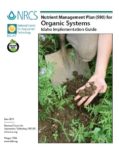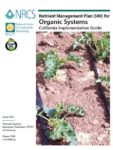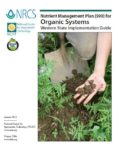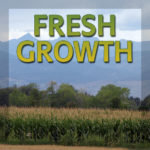The educational materials listed on this page are about Composting.
Many farms, especially organic farms, utilize compost for fertility, but what exactly is composting? Compost soil is made up of green waste (e.g. grass clippings) and brown waste (e.g. dried leaves) that provide nitrogen and carbon, respectively. With the right ratio of each, microbes in the compost begin to break down the material, turning it into organic matter. Composting methods depend on what type of farming is being done and at what scale. Other forms of composting include vermicomposting, or worm composting, which uses red worm composting to produce compost. Specialty crop farmers can make mushroom compost from the waste of mushrooms, and livestock farmers often compost manure over time. Compost making requires time, careful maintenance and the correct ratio of input materials. Key practices include nutrient cycling, nutrient management, organic fertilizers, composting, compost extracts, earthworms, organic matter, soil quality/health, soil stabilization.
Building Soils for Better Crops will help you understand soil structure, soil fertility and overall soil management, including composting to increase organic matter. Diversifying Cropping Systems can be useful in identifying practices that enhance diversity on farms, such as manure management for livestock operations. The Small Ruminant Toolbox guides producers who are managing small livestock enterprises and managing composted manure in cropping systems.
Showing 1-4 of 4 results

Nutrient Management Plans: Idaho
This is a collaborative project to build the capacity of conservation professionals to assist organic and transitional farmers in planning and implementing conservation practices through the Environmental Quality Incentives Program Organic Initiative. This guide is part of a series of guides created by Oregon Tilth for use by NRCS staff in the Western Region. This document is […]

Nutrient Management Plans: California
This is a collaborative project to build the capacity of conservation professionals to assist organic and transitional farmers in planning and implementing conservation practices through the Environmental Quality Incentives Program Organic Initiative. This guide is part of a series of guides created by Oregon Tilth for use by NRCS staff in the Western Region. This document is an instruction […]

Nutrient Management Plans: Western Region
This document is an instruction guide for creating and implementing a nutrient management plan on certified or transitioning organic lands in the Western Region.

Fresh Growth Podcast
Fresh Growth: Approaches to a More Sustainable Future from Western Ag Practitioners introduces you to farmers and ranchers from around the western United States who are finding innovative sustainable practices that enrich the natural resources we all care about. These successful multi-generational operations experiment with new ideas and are making it pay. Listen in as […]